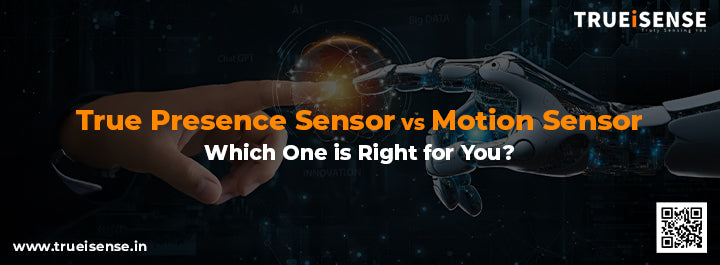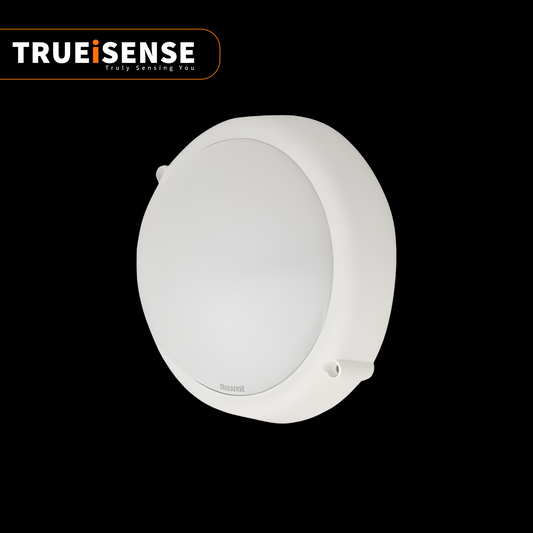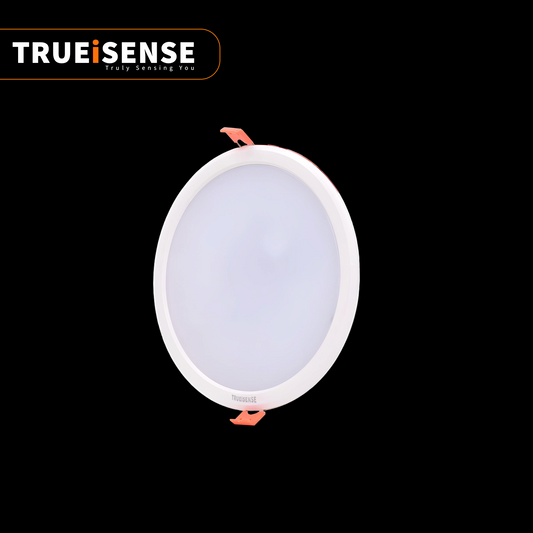
True Presence Sensor vs Motion Sensor – Which One is Right for You?
Introduction
In today’s smart automation landscape, sensors play a critical role in optimizing energy efficiency, security, and user convenience. Among the most commonly used sensors are motion sensors and true presence sensors. While both serve the purpose of detecting Presence, they function differently and are suited for different applications.
A motion sensor detects movement within its range and activates lights, alarms, or HVAC systems. However, a true presence sensor, also known as a real presence sensor or true presence detector, goes a step further. It can sense even the slightest human presence—whether a person is sitting still, reading, working at a desk, or even sleeping.
Understanding the key differences between a presence sensor and a motion sensor is essential when selecting the right technology for offices, hospitals, smart homes, educational institutions, and commercial spaces. In this article, we’ll break down their functionalities, applications, benefits, and which one is best suited for different environments.
What is a Motion Sensor?
A motion sensor detects movement within a defined range and triggers an action, such as switching on lights or sending security alerts. It is commonly used in hallways, corridors, outdoor security systems, and commercial buildings where frequent movement occurs.
Types of Motion Sensors
Passive Infrared (PIR) Sensors
- Detects infrared radiation emitted by humans or objects.
- Works best in open areas with a clear line of sight.
- Commonly used in lighting automation and security alarms.
Microwave Motion Sensors
- Emits microwave pulses and detects movement by analyzing the reflected signals.
- Can penetrate walls and sense movement over longer distances.
- Used in commercial buildings, parking lots, and large spaces.
Applications of Motion Sensors
- Security Systems – Detects movement and triggers alarms in restricted areas.
- Lighting Automation – Turns lights on/off in high-traffic areas like corridors and parking spaces.
- Retail Stores – Detects customer presence for interactive displays.
- Smart Home Integration – Controls lighting and security systems based on movement.
Advantages and Limitations of Motion Sensors
- Affordable and easy to install
- Effective for high-traffic areas
- Works well for security applications
- Requires movement to activate
- Fails to detect stationary individuals
- Prone to false triggers from pets, shadows, or temperature changes
What is a True Presence Sensor?
A true presence sensor, also known as a real presence sensor or true presence detector, is a more advanced presence sensor that can detect human presence even if there is no movement. Unlike motion sensors, which rely on movement, true presence sensor use high-frequency radar (24GHz or mmWave technology) to sense micro-movements such as breathing and heartbeats.

How True Presence Sensors Work
A true presence sensor continuously scans a room to detect any human presence, regardless of movement. For example, in an office setting, an employee sitting at their desk and working on a computer would not trigger a motion sensor, but a real presence sensor would detect them and keep the lights or HVAC system running efficiently.
Applications of True Presence Sensors
- Hospitals & Healthcare Facilities – Monitors patients without disturbing them, ensuring energy efficiency in patient rooms.
- Corporate Offices – Adjusts lighting and HVAC based on real Presence, reducing energy waste.

- Conference Rooms & Classrooms – Ensures that energy is only used when people are present.
- Hotels & Hospitality – Detects guests in rooms to optimize lighting and air conditioning.

- Zen Rooms & Meditation Spaces – Provides seamless automation without requiring movement.

Advantages and Limitations of True Presence Sensors
- Detects even the quietest presence (breathing, micro-movements)
- Prevents false triggers and enhances energy efficiency
- Ideal for stationary Presence detection
- Higher cost compared to motion sensors
- Requires calibration for optimal accuracy
Key Differences: True Presence Sensor vs. Motion Sensor
Feature |
Motion Sensor |
True Presence Sensor |
|
Detection Method |
Movement-based (PIR, microwave, ultrasonic) |
Real presence detection (Radar, mmWave) |
|
Sensitivity |
Needs movement to activate |
Detects even still individuals |
|
False Triggers |
Prone to shadows, pets, environmental factors |
Minimal false triggers |
|
Applications |
Security, high-traffic lighting automation |
Offices, hospitals, HVAC, patient rooms |
|
Energy Efficiency |
Moderate |
High (detects true presence, reducing wastage) |
Which Sensor Should You Choose?
When to Choose a Motion Sensor
- If you need a cost-effective solution for security or lighting automation.
- For hallways, corridors, and outdoor spaces where movement is frequent.
- In retail stores and commercial spaces where motion-based activation is sufficient.
When to Choose a True Presence Sensor
- For offices, hospitals, hotels, and smart homes where people may remain stationary.
- If real presence detection is crucial to maximize energy savings.
- In patient monitoring, corporate offices, and HVAC automation, where traditional motion sensors fail.

The Future of Presence Sensors and Smart Automation
With advancements in AI, IoT, and smart automation, true presence sensors are becoming an essential part of energy-efficient buildings. These sensors integrate with smart lighting systems, HVAC controls, and security solutions to provide a seamless, intelligent experience.
Some emerging trends include:
- AI-powered presence detection to differentiate between humans and objects.
- Integration with IoT for automated building management.
- Enhanced energy savings through predictive Presence analysis.
As businesses, hospitals, and smart homes continue adopting true presence sensors, they are set to become the industry standard for real presence detection and automation.
Conclusion
Both Motion Sensors and True Presence Sensors serve important functions in smart buildings, commercial spaces, hospitals, and offices. While motion sensors work well in areas with frequent movement, true presence sensors offer a superior real presence detection experience by sensing human presence—even without movement.
If you are looking for a solution to maximize energy efficiency, improve automation, and ensure seamless Presence detection, investing in true presence sensors is the smarter choice.

💡 Looking for the right presence detection solution? Contact us to explore the best sensors for your space!
Connect Directly with us via Whatsaap +91 9810778965 or Mail us at info@octiot.com,
Also Explore www.octiot.com for more Energy Saving Solutions.




1 comment
Interested for business purpose